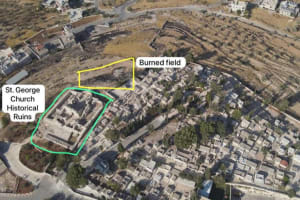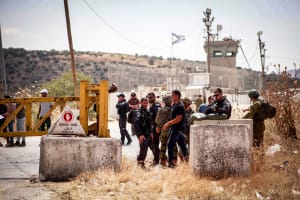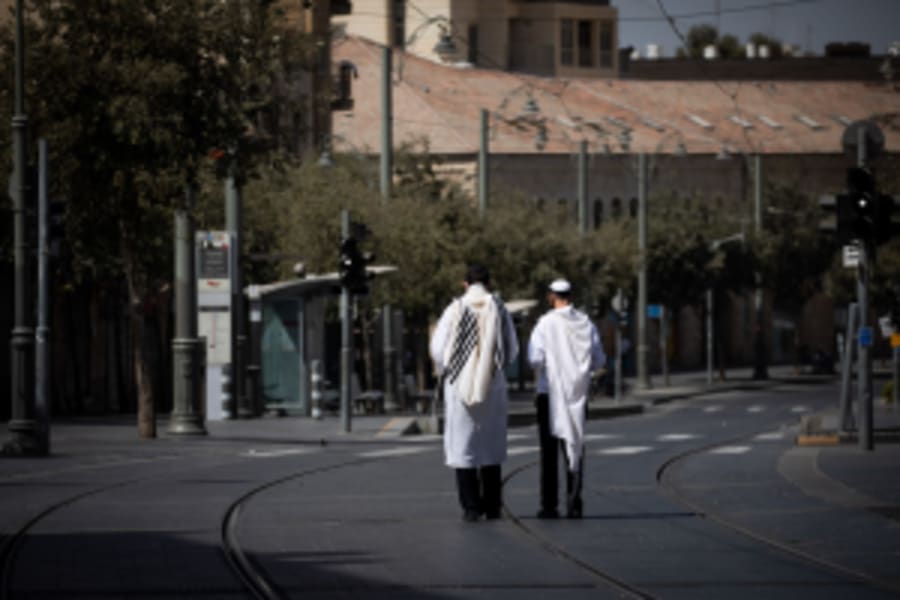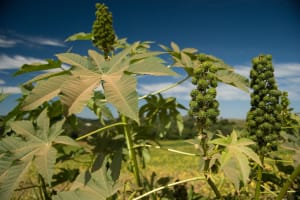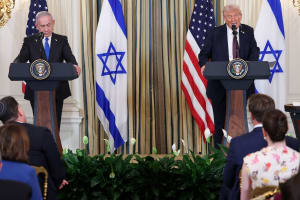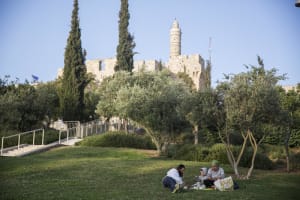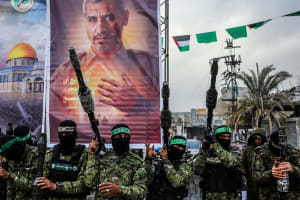Is ‘settler violence’ real – or just a powerful narrative?
Story of violence in Judea & Samaria is far more layered and charged than often portrayed in the media
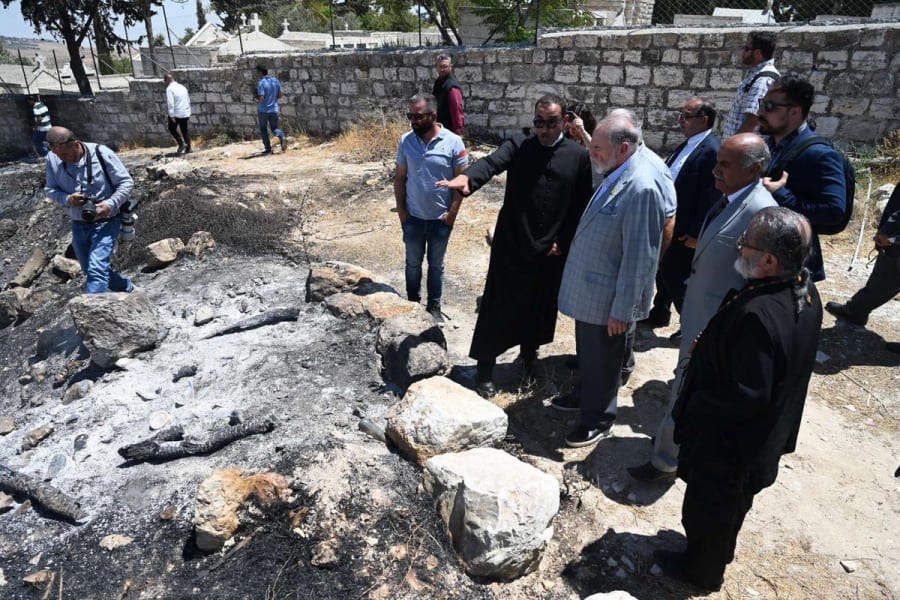
It was billed as a hate-fueled act of arson – a sacred church set ablaze by Jewish settlers, prompting swift and global condemnation.
But the fire, it turns out, never touched the church.
Just days after headlines decried an alleged attack on the ancient Church of Saint George near the West Bank village of Taybeh, the narrative has been flipped on its head. According to Israeli police, the archaeological site remains entirely intact.
"Contrary to false reports and following recent foreign media coverage regarding the alleged arson within the archaeological site of the Church of Saint George in the village of Taybeh, we wish to clarify that these reports are factually incorrect, lack any evidentiary basis, and risk misleading the public," the Israel Police said in a statement.
"Findings gathered on the ground unequivocally show that no damage or harm was caused to the holy site itself."
What actually happened?
Police say a small brush fire broke out in an open area nearby – no buildings, crops, or church infrastructure were harmed. Within minutes, young men from a nearby Jewish farm rushed toward the flames wearing reflective vests and carrying fire suppression gear. Social media videos that initially painted them as arsonists instead appear to show them trying to help.
One teenager was even filmed holding what looked like a compressed air blower, commonly used to contain fires. Still, Palestinian posts online accused him of setting the blaze.
Police say their emergency dispatch center received calls from both Israeli residents and one Palestinian caller. However, contrary to media reports, no repeated or follow-up calls came from Palestinian sources.
However, the incident prompted a strong response from U.S. Ambassador to Israel Mike Huckabee.
"To commit an act of sacrilege by desecrating a place that is supposed to be a place of worship, it is an act of terror, and it is a crime," he said on Saturday after visiting the church. "There should be consequences, and it should be harsh consequences."
Even U.S. Senator Lindsey Graham, a staunch supporter of the State of Israel, weighed in during a Fox News interview.
"There was a Palestinian Catholic church burned in the West Bank… If Israeli settlers are the ones who burned the church in the West Bank, I want them to be punished,” he said.
Foreign and other media outlets quickly jumped on the story. But what happened to fact-checking? What happened to objective reporting – or at the very least, attributing claims when reporters could not independently verify them?
"The narrative got pulled in a particular direction," Naomi Kahn, International Director of Regavim (a public movement dedicated to the protection of Israel’s national lands and resources), told ALL ISRAEL NEWS. "We cannot yet prove who set the fire. We can prove who tried to put it out."
This wasn't the first explosive claim against Jewish settlers in the West Bank to circulate widely before the facts were established.
Just days earlier, a similar accusation surfaced after 20-year-old Palestinian-American Saifullah Musallet was found dead in the town of Sinjil, north of Ramallah. Reports quickly claimed he had been beaten to death by Israeli settlers, who allegedly blocked emergency vehicles from reaching him in time.
Police presented a very different picture.
"No official report was filed regarding a homicide at the time the claim surfaced, and no access to the body was granted to allow for proper forensic examination or collection of critical evidence," the police said in a statement.
Nevertheless, the police and IDF launched a proactive investigation to determine what occurred, stating, "If criminal actions are found to have occurred, accountability will be pursued by the law."
However, what was left out of most media coverage was a statement released that same day by the Binyamin Regional Council. It described a premeditated confrontation in which Arabs attacked Jewish residents with stones, incendiary devices, and a makeshift explosive – prompting the victims to call for help and the IDF to respond.
These incendiary narratives are confusing because violence by Jewish extremists in the biblical heartland does appear to be on the rise. On the other hand, the facts are often murky. More than one version of the story usually emerges, and there's rarely enough evidence to verify either side with certainty. Based on the data and the accounts, the truth likely lies somewhere in the middle.
One of the biggest challenges is simply getting accurate numbers. Incidents are tracked by four bodies each using its own methodology: the IDF, Israel Security Agency (Shin Bet), the Israel Police, and the United Nations Office for the Coordination of Humanitarian Affairs (OCHA).
Regavim recently released a report titled "False Flags and Real Agendas," which focuses on the challenges of accurately reporting violence in Judea and Samaria. The organization began the research after the Biden administration imposed sanctions on particular residents of the region, claiming they had perpetrated violence against Palestinian civilians.
Regavim, whose core mission is to protect Israel's land, started noticing a pattern: many of the reported incidents involved illegal outposts and were presented in the media as attacks by violent Jewish settlers against innocent Palestinian villagers. But according to Regavim's Kahn, the facts didn't always line up.
"We wanted to know what was at the base of these reports of violence, so we began to look into it," Kahn said in a previous interview with this reporter.
As the team dug deeper, she claimed they uncovered something startling. The narrative, she said, had been "very carefully constructed based on curated evidence by anti-Israel forces," and it started before Oct. 7. Since then, she added, it has had "massive ramifications for Israel on the international stage" and has also contributed to a deepening divide within Israeli society.
According to the Regavim report, 98% of incidents labeled by the United Nations as "settler violence" involved no Israeli civilians at all. Reaching that conclusion, however, was no simple task. Kahn described the research effort as a "James Bond" kind of operation.
The team began by examining the United Nations' Data on Casualties in Judea and Samaria and the occupied Palestinian territories. This database contains extensive statistics, broken down by categories like Palestinian and Israeli casualties, fatalities, and regions.
But as Regavim investigated, they found something troubling: in many cases, individuals recorded as Palestinian casualties were actually in the midst of carrying out terror attacks against Jews. That detail, however, wasn't readily apparent from the dashboard alone.
When Regavim requested the full dataset from the UN, they were denied access because they were not an approved humanitarian organization. Instead, they worked with a third-party criminal researcher and obtained 10 years of data.
The deeper they looked, the more suspicious the numbers seemed.
"One example is every single time a Jew goes up to the Temple Mount with a police escort and a completely peaceful visit, as allowed by law, it is listed as settler violence," Kahn claimed.
"Every traffic incident in Area C, the area of Judea and Samaria under Israeli jurisdiction, every traffic incident involving a Palestinian and a Jew … is listed as settler violence."
Beyond misreported events, the team also found hundreds of cases that, according to Kahn, never happened but were still recorded and reported.
Israeli data, she noted, wasn't much better.
According to Israel Police, from 2014 to 2024, a total of 537 investigation files were opened against suspects for Jewish nationalist-motivated crimes in Judea and Samaria – averaging over 50 cases per year, the report showed.
However, the IDF reported much higher numbers. Between 2014 and 2024, a total of 1,356 cases of Jewish nationalist-motivated violence were opened in the Judea and Samaria District.
More than 500,000 Jews live in Judea and Samaria, according to Interior Ministry data compiled by former lawmaker Ya’akov Katz and reported by JNS. If each incident involved a different individual, settler violence would account for just 0.12% of the population.
"This false narrative has been allowed to grow specifically because there is no data transparency," Kahn said.
"The Israel Police does not release this information. The IDF certainly does not release this information. None of the Israeli authorities felt that it should be publicized that there is violence among this community. So they kept quiet, and they allowed the other side to pump out a narrative of massive and growing violence that simply isn't true."
Arab-perpetrated violence, Kahn acknowledged, is equally difficult to quantify – but the numbers appear to be much higher.
According to IDF data, between 2019 and 2022 alone, there were 24,808 incidents involving stone-throwing and Molotov cocktails – excluding shootings, explosives, and other attacks – carried out by Arabs against Jewish communities. In contrast, Israel Police recorded 9,780 cases of Arab nationalist violence in Judea and Samaria over an entire decade.
Even just comparing the military figures, the gap is wide: 1,356 cases of Jewish nationalist-motivated violence versus 4,748 cases of Arab nationalist-motivated violence.
It's a big difference.
Kahn stressed that two wrongs don't make a right, and obviously, no violence should be perpetrated – but perspective is required.
Now, other sources can and should also be considered.
An April report from the Washington Institute revealed a sharp uptick in right-wing extremist violence against Palestinians in the West Bank during the early months of 2025 – approximately a 30% rise compared to the same period last year, based on an analysis of recent incidents.
A separate report by the left-leaning Israeli NGO Yesh Din examined the legal follow-through on such cases. The organization said it has tracked 1,701 police investigation files related to offenses by Israelis against Palestinians since 2005. Of those, 94% ended without an indictment, 6.6% resulted in an indictment, and just 3% led to a conviction.
Meanwhile, Israel's security officials have recently confirmed to local media that settler violence is at its highest since the war with Hamas began. From January to June 2025, there were 404 reported incidents of Jewish attacks on Palestinians in Judea and Samaria. That's up from 286 in the first half of 2024 and 332 in the second half of that year – a gradual but notable escalation.
At the same time, Palestinian terrorism in the West Bank appears to have slowed, at least in terms of high-profile attacks.
The same Washington Institute report stated: "Palestinian terrorism has significantly decreased, to an average of six major attacks per month between January and March, versus twenty-four per month during the same period in 2024."
But that drop, the report notes, is likely due to Israel's aggressive military campaign since Oct. 7, which has focused on dismantling terror cells and limiting their ability to operate freely.
Backing that up, a new report from the Shin Bet (Israel's internal security agency) shows that while overall terror activity in the West Bank surged in 2024 – with 6,828 incidents compared to 3,436 the previous year – the number of "significant attacks" actually fell. These include stabbings, shootings, and car rammings.
In 2024, 231 such attacks occurred, down from 414 in 2023 – a drop of 44%.
The agency also said it prevented 1,040 significant attacks in 2024 across both the West Bank and Jerusalem, nearly identical to the 1,032 thwarted in 2023. That's up sharply from 472 prevented attacks in 2022 and 351 in 2021.
"If you take 100% of them trying to hurt us, only 2% to 5% succeed," Lt. Col. (res.) Tal Nir, a member of the IDF's Combat Engineering Corps in Judea and Samaria, told The Media Line in May.
According to Nir, while the number of attempted attacks remains high, Israel has become much more effective at stopping them. He added that most attacks originate from individuals living in refugee camps, and that since Oct. 7, 2023, the military has significantly restricted their ability to leave those areas and carry out attacks.
Even before the Oct. 7 Hamas massacre, security officials were closely monitoring the settlements. The situation was already simmering – one spark away from igniting. When the massacre occurred, officials believed the biblical heartland would become a second front. That's why their response was so proactive – and, according to the data, relatively effective.
That's the security side of the equation – certainly complex.
And it makes the narrative battle just as complicated.
The story of violence in Judea and Samaria – including the question of so-called settler violence – is far more layered and politically charged than it's often portrayed by either side or in the media.
Some reports are true, some are distorted or exaggerated, and some are outright false, as seen in the case of the Taybeh church. Whether these misleading narratives result from bias, emotion, or a lack of journalistic or official diligence is hard to say – likely, a combination of all three.
The truth may be under attack as much as any community on the ground – and in this conflict, those who control the narrative may be just as powerful as those who control the territory.
נכנס לאירוע הזה באיחור לצערי, אבל חייבים לנפץ את השקרים
— אלישע ירד (@ElishaYered) July 21, 2025
בימים האחרונים משתוללת ברחבי העולם עלילת דם בזויה ושקרית כנגד ההתיישבות, שמזכירה תקופות אפלות באירופה והצליחה להפיל עד כה גם לא מעט אוהבי ישראל בארה"ב.
לפני שניגש לפרטים, נדגיש ונבהיר: לא בוצע שום אירוע של "פשיעה לאומנית"… pic.twitter.com/v7XsUfacZ9
Is All Israel News’ faithful reporting important to you? Be part of it—help us continue by becoming a $5/month supporting partner.
.jpg)
Maayan Hoffman is a veteran American-Israeli journalist. She is the Executive Editor of ILTV News and formerly served as News Editor and Deputy CEO of The Jerusalem Post, where she launched the paper’s Christian World portal. She is also a correspondent for The Media Line and host of the Hadassah on Call podcast.
You might also like to read this:


